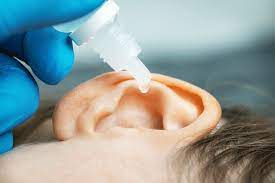
Earwax build-up can be frustrating and uncomfortable, and many people turn to hydrogen peroxide as a solution to clean their ears. Hydrogen peroxide in ear cleaning is a popular method, but it’s important to understand both the benefits and risks of using this chemical in your ears.
What is Hydrogen Peroxide? Hydrogen peroxide is a chemical compound commonly used as a disinfectant and antiseptic. It’s a colorless liquid with a slightly bitter taste and a chemical formula of H2O2. When hydrogen peroxide comes into contact with organic material, such as bacteria or earwax, it breaks down into water and oxygen.
Benefits of Using Hydrogen Peroxide in Ear Cleaning
- Softens Earwax: Hydrogen peroxide can help soften and loosen earwax, making it easier to remove. It works by releasing oxygen, which causes the earwax to break down and become easier to remove.
- Kills Bacteria: Hydrogen peroxide has antibacterial properties, which can help kill bacteria that may be present in the ear canal. This can help prevent infections and reduce the risk of other ear-related issues.
- Safe and Affordable: Hydrogen peroxide is a safe and affordable way to clean your ears at home. It’s readily available at most drugstores and is easy to use.
Risks of Using Hydrogen Peroxide in Ear Cleaning
- Irritation and Inflammation: Hydrogen peroxide can cause irritation and inflammation if used improperly or if it comes into contact with sensitive areas of the ear, such as the eardrum. This can lead to discomfort, pain, and even temporary hearing loss.
- Ear Infections: Using hydrogen peroxide in the ear can increase the risk of developing an ear infection. This is because hydrogen peroxide can disrupt the delicate balance of bacteria in the ear canal, making it easier for harmful bacteria to grow.
- Damage to the Eardrum: If used improperly, hydrogen peroxide can cause damage to the eardrum. This can lead to hearing loss, dizziness, and other ear-related issues.
How to Use Hydrogen Peroxide in Ear Cleaning Safely
- Dilute the Hydrogen Peroxide: Never use undiluted hydrogen peroxide in your ears. Instead, mix equal parts hydrogen peroxide and water to create a safe and effective solution.
- Lie Down: Lie down on your side with the affected ear facing upwards.
- Apply the Solution: Use a dropper or syringe to apply a few drops of the diluted solution into your ear. Be careful not to insert the dropper or syringe too far into your ear canal.
- Wait and Drain: Wait for a few minutes to allow the hydrogen peroxide solution to work. Then, tilt your head to the side to allow the solution and any earwax to drain out of your ear.
- Repeat: Repeat the process for your other ear if necessary.
When to See a Doctor If you experience pain, discomfort, or any other issues after using hydrogen peroxide in your ear, stop using it immediately and seek medical attention. Additionally, if you have a history of ear infections or other ear-related issues, it’s best to consult with a doctor before using hydrogen peroxide for ear cleaning.
Conclusion
Hydrogen peroxide in ear cleaning can be a safe and effective method when used properly. However, it’s important to understand both the benefits and risks before attempting to clean your ears with hydrogen peroxide. By following these steps and precautions, you can safely remove earwax and maintain ear health.